

Chapter 1(Research Description) Capstone Project Guidelines and Sample
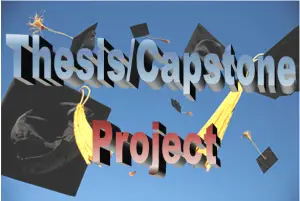
Chapter 1 Research Description
– serves as the engine that drives all the rest of the documents. Once a word or phrase is substantiated, use the exact word or phrase throughout the thesis or capstone project.
In chapter 1, once a word or phrase is established, you will use it all throughout the study. The content is connected and repetitive from study to study.
- Project Context
(Should be at least 2 pages of presentation and discussion)
What will the researcher do?
- The researcher must describe its prevailing issues based on his experience when introducing the research problem.
- The most essential part of doing your research or capstone study is to ask information from your targeted users.
- Project context gives a strong justification for choosing such research problem based on his/her capacity.
- This must also explain how you form your title, what are the issues to address and why must that issue be addressed.
- Finally, in the project context, provide a statement that shows the relationship among the rationale of the study to the proposed research problem.
Please enable JavaScript
This is to make your document content well-explained and emphasizing the formulated topic or title.
- Research Objectives
A research objective is a concrete statement that describes what the researcher is trying to achieve. A well-worded objective will be SMART, i.e. Specific, Measurable, Attainable, Realistic, and Time-bound.
General Objectives
- General objectives are extensive goals to be achieved and are usually less in number.
Specific Objectives
- Specific objectives are short term and constricted in focus.
- General objectives can be broken into smaller parts to form specific objectives.
- Most of all, specific objectives gives a clearer vision of what the study is trying to achieve.
- Scope and Limitations of the Research
- The scope explains the nature, coverage and time frame of the study.
- The limitation, on the other hand, explains all that are NOT included in your project.
- Significance of the Research
- Describes the contributions of the study as new knowledge and makes findings more conclusive.
- Also, it cites the usefulness of the study to certain groups.
- Then, cite all the persons and groups that would benefit from the study.
- Of course, the researchers should include themselves.
5. Definition of Terms
- Definition of terms gives definition to the major terms that are relevant to your study.
- Lastly, the definition can either be connotative or denotative in relation to the study only.
Download the Sample Document CHAPTER 01
To Get the full sample of Chapter 1, Just contact me:
Email: [email protected]
Contact: 09289324734/09778216530
2 thoughts on “Chapter 1(Research Description) Capstone Project Guidelines and Sample”
Hello po good evening ask lang po sana ng tulong kong anung Thesis Proposal para sa katulad kong student. Salmat po,.
Sir any info po about sa Theory of the study need ko lng po ng deeper info po
Leave a Comment Cancel reply
You must be logged in to post a comment.

CAPSTONE PROJECT: Parts of a Capstone Project
- Parts of a Capstone Project
- Voice in the Capstone Project
- Analysis of Qualitative Data
What a Table of Contents Could Contain
I Introduction A Statement Of Problem/Opportunity (Research Question) B Background, Context, And Significance Of Study C Project Researcher Identification II Literature Review A Subheadings (Themes Discovered In Review) B Notice Of Gaps In Knowledge III Methods A Subjects/Participants B Data Collection Approaches/Strategies 1 Advantage Of Strategy 2 Limitation Of Strategy 3 Potential Risk 4 Ethical Issues About Collection Upon The Subjects/Participants C Data Analysis Approaches And/Or Software (NOT The Results Themselves, Just How You Are Going To Analyze The Data – Coding Method, Analysis Of Interviews/Recordings, Mathematics And Stats Analysis) IV Results, Findings, Interpretation, And Discussion V Recommendations, Application, And Conclusion VI Reference Pages
What Goes Into Each Section
- Next: Voice in the Capstone Project >>
- Last Updated: Jun 27, 2019 9:31 AM
- URL: https://lifepacific.libguides.com/capstone
Life Pacific University Alumni Library | 1100 W. Covina Blvd | San Dimas, CA 91773 | Ph: (909) 706-3009 | Email: [email protected]

Want to create or adapt books like this? Learn more about how Pressbooks supports open publishing practices.
Capstone Components
8 The Project Framework
The story continues….
Harry and Physicus spent hours exploring research and finding some fascinating information. Nothing directly explained why a Siamese cat would not have an interest in catching mice. However, Physicus found a study in which researchers concluded that the obesity of small animals was related to their playing and hunting habits. The more overweight the animal, the less they played or hunted.
“This makes sense,” argued Physicus. “When an animal is not hungry, it does not need to be very active in hunting food.”
Another study interestingly connected the number of prey to the lack of engagement in the hunt. Researchers found that a lizard would hunt for a single cricket placed in its cage. However, the lizard would not hunt any of the crickets when 100 were released simultaneously. Further, researchers noted when 10 crickets were released into the lizard’s cage, they were immediately hunted and eaten.
Physicus was so excited. “You see,” he exclaimed, “somewhere between 10 and 100 crickets is where the lizard lost interest in the hunt!”
“I wonder if this has anything to do with how Pickles behaves?” Harry said. Possibilities, but no answers, thought Harry.
Physicus continued, “Now we have two ways we can use to think about the problem. Maybe Pickles is overweight or overwhelmed.”
Interpreting the Story
Physicus and Harry investigated research findings to see what they could learn about the problem. What they discovered were two possible reasons for Pickles’ behavior. This information gave Harry and Physicus two ways to think about the problem. Harry and Physicus will choose one of these ways to provide a direction for exploring published theories that are related to the problem. The friends will choose one theory as the basis for their inquiry. The chosen theory guides the development of the research project. This is called a Project Framework.
The Project Framework
The role of the Project Frame is to outline how the problem will be studied. This component details the perspective or angle from which the research story will be viewed. The Project Frame provides the lens for how the researcher will focus their attention on certain features of the problem and disregard others.
A starting point to frame a project is use a published theory. However, advanced researchers may base their projects on more than one theory, so you may encounter this when reading published articles. In educational research, theories about learning, development, cognition, psychology, teaching, etc., are used to frame how an educational problem is studied. Examples of published theories are Bandura’s Social Cognitive Theory, Knowles’ Adult Learning Theory, Theories of Behavior, Teaching as Inquiry, and Professional Development Theories. The Project Frame is bounded by the chosen, published theory.
A published theory is chosen by how it connects to the research problem. The connection can be found in the Background of the Problem, such as a feature of the setting or participants, or the theory connects to your hypothesis about how to solve the problem. For example, if the problem occurs in a classroom, a social learning theory might be in order; if the problem occurs in a rural school, we might select the psychology of poverty to frame the study. If we hypothesize that professional development (PD) training is needed to solve the research problem, then we would choose an appropriate theory of PD.
The theory provides the parameters for how a project is developed. The theory acts as guard rails to keep the methodology focused and to ensure the purpose of the study is realized. Different frames for the same problem will yield very different results. Think about the problem of low test scores, as an example. If a social cognitive learning theory (learner-focused) is used to frame a project involving low test scores, the project design will be different from the design of a project involving low test scores using a professional development theory (teacher-focused).
The writing of the Project Frame includes a full description of the published theory citing the original theorist’s work. The writer must explain why this theory is the best choice to frame your problem. The specific aspects of the theory that relate to your problem are discussed. The discussion details how the theory relates to the background or context of the problem, and how the theory connects to the purpose of the capstone project.
Telling the Research Story
The Project Frame explains the “point of view” of the research story. It is based on a published theory. In our example problem of low test scores, the point of view was from a social cognitive learning perspective. This point-of-view is focused on how low test scores can be explored by using a student-focused perspective that employs social cognitive strategies.
The elements in this heading can be written in a variety of ways, however, the elements must be there. Often, the Project Frame is written by presenting the theory, how it addresses the problem, and why it is the best choice first. This is followed by how it relates to the background and/or context and then how it connects to the purpose of the project. In other cases, the theory is presented first, followed by how it addresses the problem, is the best choice, relates to the history and current situation, and ends with how the theory supports the purpose of the project.
Since the Project Frame functions as the point of view in the research story, elements of the theory or framing perspective are found throughout the rest of the capstone project. This means that the other components of the research story are told from this point of view. The perspective of the Project Frame keeps your research story structured and on track.
The Project Frame component appears in Chapter 1 of the capstone project. The framework used to develop a capstone project can be a theory, or it can be related to the type of practical product the project aims to create or implement. For example, professional development training, informational literature (handbook), or policy development.

Capstone Projects in Education: Learning the Research Story Copyright © 2023 by Kimberly Chappell and Greg I. Voykhansky is licensed under a Creative Commons Attribution-NonCommercial-ShareAlike 4.0 International License , except where otherwise noted.

- Customer Reviews
- Extended Essays
- IB Internal Assessment
- Theory of Knowledge
Literature Review
- Dissertations
- Essay Writing
- Research Writing
- Assignment Help
- Capstone Projects
- College Application
- Online Class
Capstone Project Proposal: What It Is And How to Write One
by Antony W
January 2, 2023
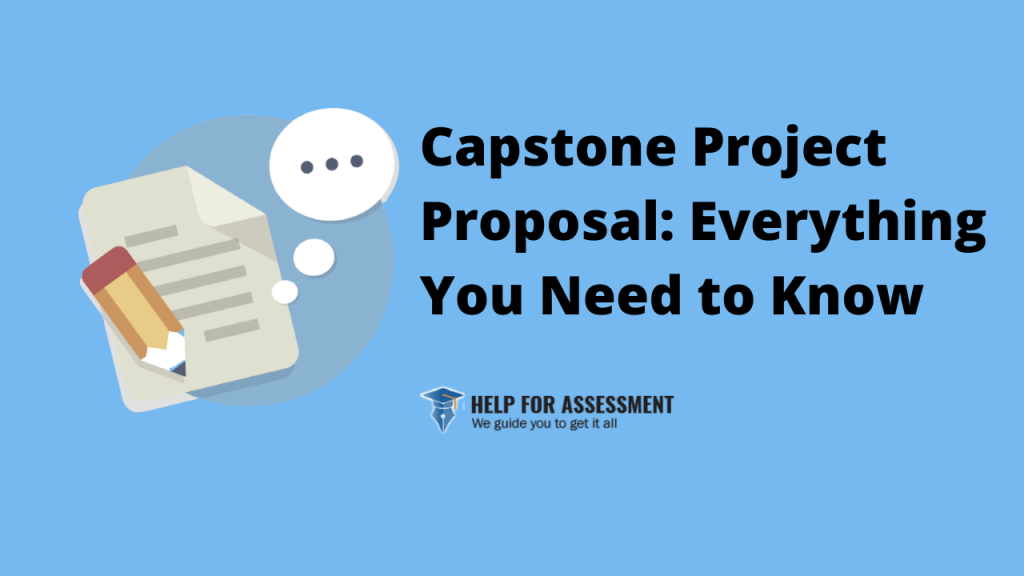
What would be your reaction if you spent months carrying out a school project, only for it to be thrown out on grounds of being irrelevant, inadmissible, or downright outrageous? Not very happy, I would say. To avoid such scenarios and censor the type of projects being carried out, schools require that every student taking this kind of an assignment to submit a capstone project proposal first.
Every capstone project begins with a project proposal. It is submitted to your instructor or school panel that reviews and either approves or rejects it. Thus, you can also think of a proposal as a plan or project blueprint.
Given that the capstone project proposal is integral to your success in the whole thing, we at Help for Assessment are here to show you how to do it properly.
Our expertise in all forms of academic writing includes a specialty in capstone projects, which is why we’re the perfect people to help you. We will also do your capstone project proposal for you at very affordable prices. Visit our homepage to learn more about us and what we can do for you.
Back to the capstone project proposal guide. This article will cover all the main aspects of how to write it including:
- What is a capstone project proposal
- Qualities of a good capstone project proposal
- How to write a capstone project proposal
- Format of a capstone project proposal
What is a Capstone Project Proposal?
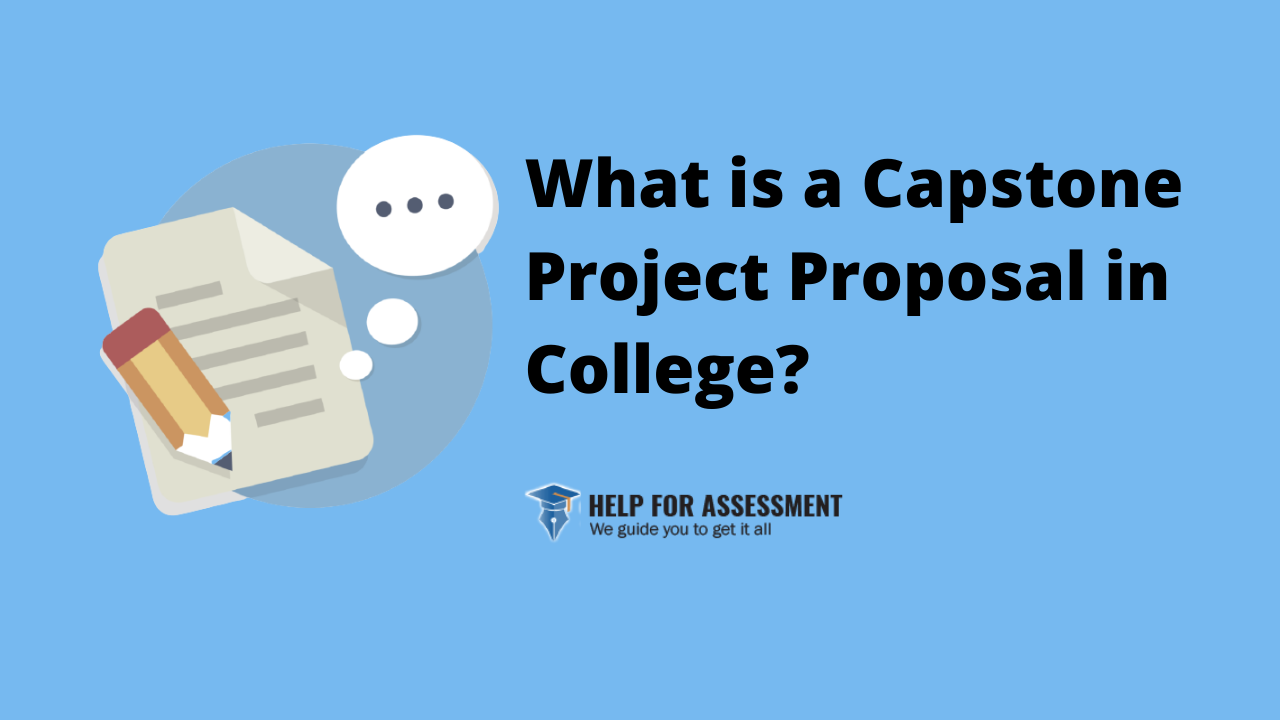
A capstone project proposal is a brief document that outlines what your capstone project is about, the steps you intend to follow while doing it, the resources you will need, and an outline of the project itself. It is more or less your blueprint for the entire project.
The purpose of a capstone project proposal is to help your instructor understand what your project is about. In the case where you are seeking assistance from the school such as funding or the use of school facilities, the proposal helps to convince them of why those resources should be allocated to you.
The proposal is also a big help to you as a student. Before you commit a lot of time and resources to the project, it forces you to take a look ahead at where you're going, what you want to achieve, and the investment you will need to put in to do that.
Capstone projects vary widely from discipline to discipline, but the proposal follows a standard format. Your instructor might provide you with a template and accompanying instructions, or they may not.
In any case, there are certain qualities you need to aim for if your proposal is to be successfully approved.
Qualities of a Good Capstone Project Proposal
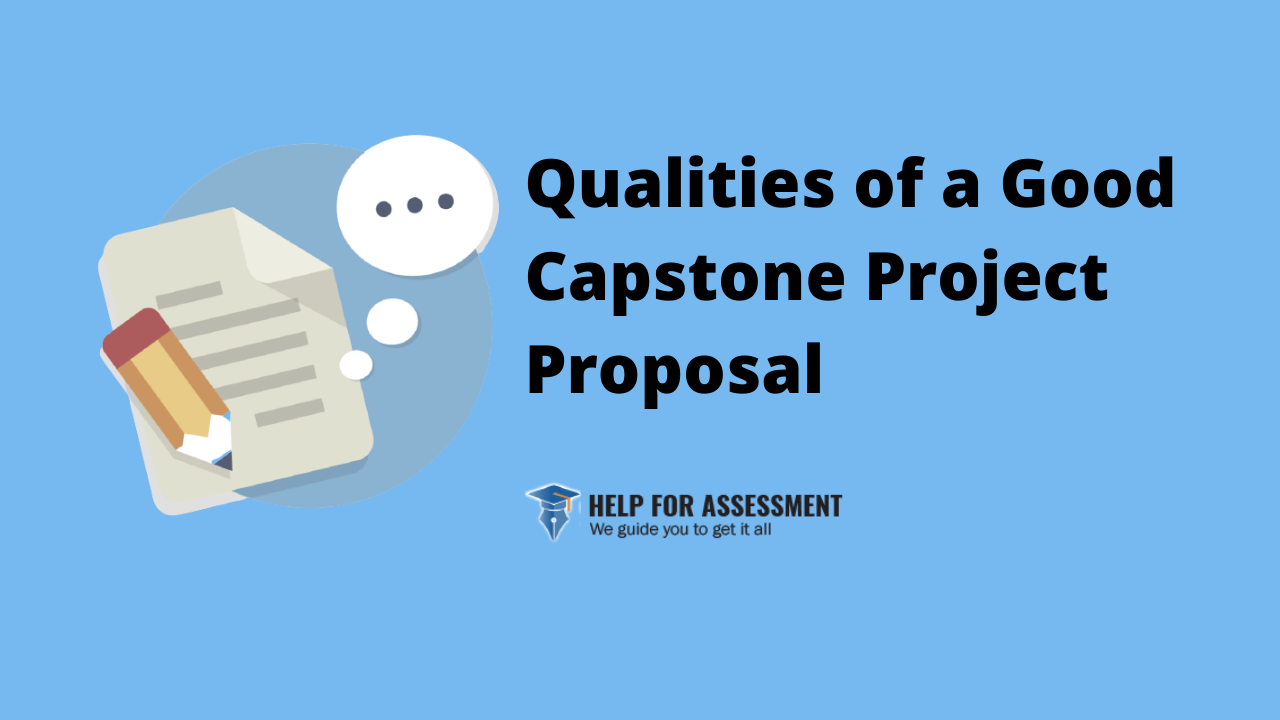
The length of a good capstone project proposal should be between 1 and 4 pages.
Anything longer is discouraged unless your instructor says otherwise. Thus, refine it until it is concise, clear, and direct.
2. Structured
The information flow should be clear and logical. It should be a document that a person can scan through in minutes and get what you’re talking about.
Thus, present it in an easy to understand manner.
3. Straightforward
The person reviewing your proposal wants answers to questions such as:
What is your project about? How will you do it? What resources will you need, and how will you get them? Who will be involved?
Provide these answers simply and directly in your proposal and you stand a much better chance of impressing them. The content of the proposal should all aim toward this one goal.
4. Compelling
The language you use should be convincing. Be confident about what you want to do, be enthusiastic, and share your enthusiasm.
Prove why you think the project will work and how relevant it is in your field.
5. Detailed
Even though the proposal should be brief, include as much detail as is needed to support your points.
Format of a Capstone Project Proposal
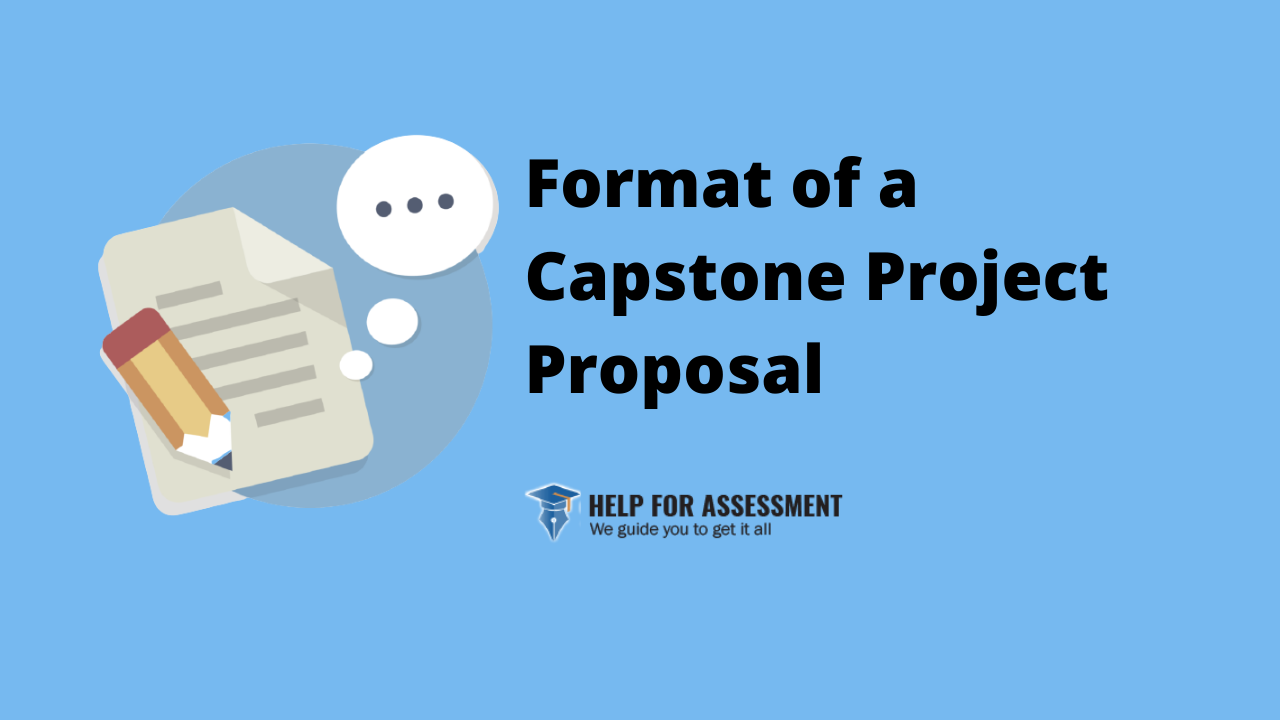
This will be the same title you will use in the capstone project write-up, so take your time to craft a brief, direct, all-inclusive title for the proposal.
One way to come up with a good title is to write down the research problem as a question then craft your title in response to that question.
You should also try to make the title as intriguing as possible to get your readers interested in what you have to say.
In 150-200 words, describe what the project is about. Give the rationale for the project, i.e, why you think it is important and should be carried out.
Also, describe your methodology, analysis, and expected findings.
Think of the rationale as to the social implications of the project you are about to undertake.
How will it help the organization you work for or society at large? Describe the original contributions your project will have to the target group.
Research Problem
This is the problem statement of the project proposal. Give your thesis statement in one sentence, keeping in mind that it is the same statement you will use in the actual project write-up.
In the case of a project deliverable or creative project, describe the product you will develop, and the rationale behind it.
Describe what format your deliverable will be, e.g. a video, website, software, new curriculum, health or education program, policy paper, etc.
You should write a descriptive literature review of all the sources you have used and cited for your project proposal including books, online sources, and papers.
You can use these same sources in the project itself or choose to go for another set.
Methodology/Project Design
Explain how you intend to do what you want to do. Start with the method of inquiry which can include textual research, scientific experimentation, statistical data collection, qualitative study, or any other method.
Describe also, in detail, how this data will be gathered, processed, analyzed, and what resources or manpower will be needed to do this.
At the same time, explain the hypotheses and theoretical academic approaches in use which form the backbone of your project.
Detail the steps of your project and state when you expect to do what. This can usually be given in the form of a table with specific dates.
Also, state when you will be meeting with your supervisor/mentor and giving progress updates.
Description of the Final Product/Expected Results
For a research project, explain what results you expect based on existing data about the same.
For creative projects, describe what the final product will be, how you expect it to look like, and how it will work. How will it help/affect the target group? How will you evaluate its efficacy and success?
Such a project will also need specific documentation, usually called a rationale report or just a report. Describe such kind of documentation format.

Resources Needed Including Expected Budget
This is a crucial part. Give a detailed record of all the resources you expect or need to use in the course of your project.
If you need funding, give a breakdown of how the money will be used and how much in total is needed.
State how you expect it to be funded, either through school funding or external sponsorship.
In the same way, state what school resources you need. Laboratory access, data access, support by school personnel, computers, or machines belonging to the school or an outside entity, and everything in between.
Reference list
This is a list of all the citations and sources used while writing the project proposal.
Tips on How To Write a Capstone Project Proposal
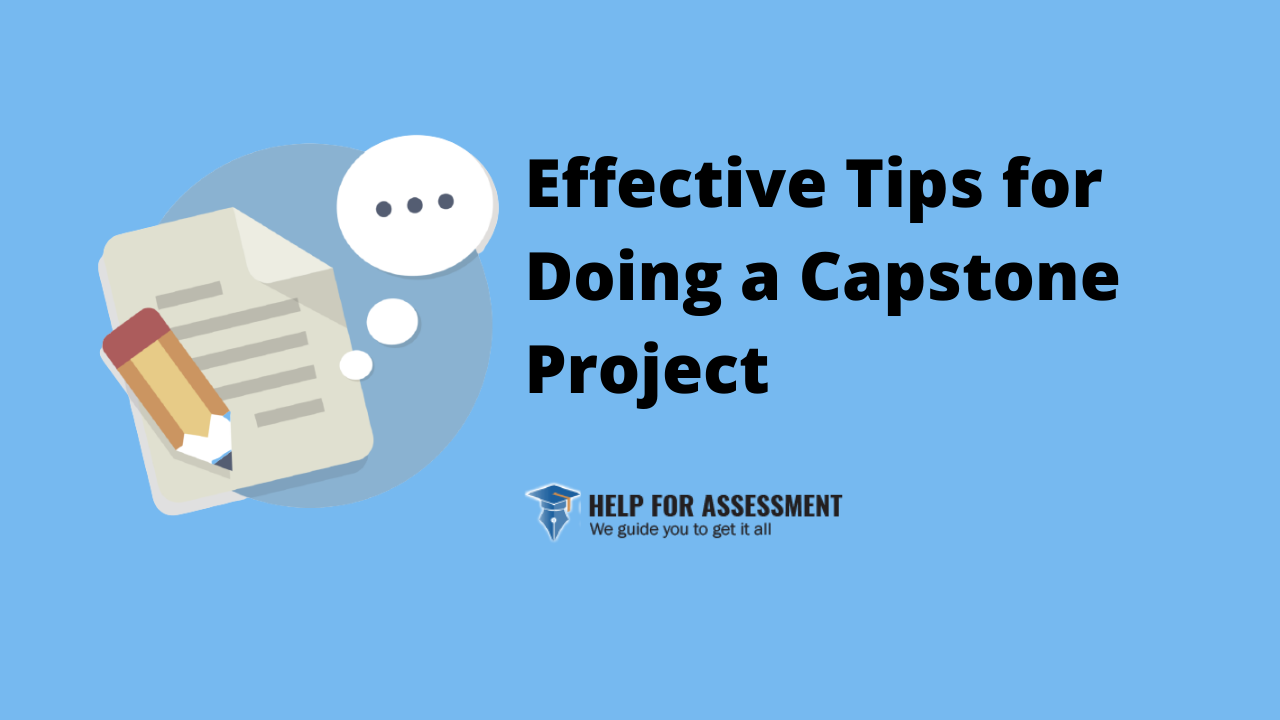
- The capstone project isn't meant to be a mere outline. Make it captivating by highlighting its real-world relevance and how it will benefit the target group. Use data where possible as proof.
- Say something about your motivation for choosing to carry out that particular project. Include some information about your background experience and why it qualifies you to carry it out. That way, your audience can connect with you and the project on a deeper level.
- Be very careful about the resources you wish to use. Restrict yourself to primary and secondary sources with a high academic credibility level. Doing so gives your project more merit.
- Follow the instructions supplied by your instructor faithfully. In many cases, you will be given a template or detailed guide about how you should format the proposal.
- Spend quality time on the title, hypotheses, and research problem. That way, your project will gain focus and have a clear scope.
- Quote sparing. Unless you have good reason to choose a quoted phrase rather than a paraphrase, stick to your own words but make sure you cite sources used.
- Review previous capstone projects and proposals done by students in your school to find out what is expected of you and get an idea on how to format your own.
Get Help With Your Capstone Project
Are you having trouble with your capstone project proposal? We strongly suggest that you get the experts involved. You cannot afford to fail at this stage because the entire project relies on it.
Let Help for Assessment handle your capstone project proposal for you and you will be assured of success.
Thanks to our student-friendly prices, you are assured of a deal of a lifetime. Check out our service page and grab our first-time discount before it is too late!
About the author
Antony W is a professional writer and coach at Help for Assessment. He spends countless hours every day researching and writing great content filled with expert advice on how to write engaging essays, research papers, and assignments.
- Campus Directory
- Current Students
- Faculty & Staff
Capstone Project Examples
The Capstone project is designed to be the BIS program's culminating experience where students meld three disciplines into a coherent, integrated whole to demonstrate academic understanding and application.

Community Engagement
"Service-learning helps students master important curriculum content by supporting their making meaningful connections between what they are studying and its many applications” (National Service Learning Partnership, 2009).

A record of academic experiences, achievements and professional development related to educational activities, culminating with completion of the Capstone/Senior Project. It should include documents and other media that demonstrate variety, depth, breadth, and quality of work.

Primary Research
An inquiry or investigation conducted by an undergraduate student and faculty mentor that results in an original intellectual or creative contribution to a field of study (Council on Undergraduate Research, 2009).

Secondary Research
Reading, examining, studying, summarizing, and integrating research completed by others with the intent of answering an original thesis question or supporting other scholarly or service related work.

Want to create or adapt books like this? Learn more about how Pressbooks supports open publishing practices.
Ch. 1 “Ideas won’t keep. Something must be done about them.” – Alfred North Whitehead, Mathematician and Philosopher
Many of you have come into this capstone course knowing what you would like to focus on for your project concept and the objectives you would like your project work to accomplish. Others may still be giving this some thought. To that end, here is some guidance to help you to start formulating an initial project concept and associated objectives. Rest assured, your concept and objects may become more refined as you move through our process.
The first step in formulating your project is to start brainstorming. As Jeff M. Miller describes in his article “7 Tips to Help You Gain a New Perspective” , brainstorming allows us the freedom to take on a new perspective and spontaneously develop a list of ideas with the intention of forming a conclusion. In this case, the conclusions would be your project concept and associated objectives.
So, here are a few questions to start brainstorming. Remember, brainstorming is a tool utilized to “get your creative juices flowing”, so don’t be afraid to let your imagination wander. Utilizing phrases such as “what if ______ were possible” and “if only I could do ______ to improve my work situation” and “I’ve always wanted to ______” are great ways to begin.
The following questions will provide some guidance to get things rolling:
- Formulating a solid marketing plan
- Forecasting costs and profit projections
- Establishing a marketing plan, etc.
- Developing consistent hiring procedures and processes
- Developing a comprehensive employee orientation and onboarding process
- Instituting employee training opportunities
- Implementing consistent review practices and procedures
- Developing a customer service manual
- Improved levels of customer satisfaction
- Increased sales to repeat customers
- More customer referrals
- Higher profit margins
Steve Jobs provides excellent insights around continuous improvement in the following YouTube video:
Sometimes it helps to think about the end results you are hoping to achieve (the objectives) and work backwards to develop your project concept. Using the examples above, that might look something like this:
- Establishing a formalized customer service plan
Other broad ideas would include: Have you considered establishing a non-profit charity? Developing a public media campaign? Launching a podcast? Planning and executing an educational workshop?
If you would like to have a discussion and brainstorm some avenues together, I’m happy to do this. Simply send me an email with your thoughts around potential project concepts and rough objectives and we can schedule a zoom session or a telephone conversation to help refine your focus.
MGMT 797 Capstone Guide Copyright © 2020 by Granite State College is licensed under a Creative Commons Attribution-ShareAlike 4.0 International License , except where otherwise noted.
Share This Book

Want to create or adapt books like this? Learn more about how Pressbooks supports open publishing practices.
Project Initiation and Planning
6 Project Charter
The most important things to discuss at this stage are: what a Charter is , what is included in a Charter , why a Charter is important , and how a Charter is developed .
What is a Charter?
“A document issued by the project initiator or sponsor that formally authorizes the existence of a project and provides the project manager with the authority to apply organizational resources to project activities.” (PMI, 2004, 368)
Why is a Charter Important?
The project charter is an indispensable part of the Six Sigma project, and the foundation for the project’s success. The creation of the project charter begins at the top of the organization as management creates a one-page document that summarizes the project. The charter is a dynamic, living document and can be updated as information becomes available in the DMAIC process . When developing a charter to documents we need to ensure we understand the goal of the project so that we can ensure the deliverables will help obtain it.
The charter provide parameters for the project – think of it as being similar to a contract, between a team and a client. It is important the organization and people working on the project understand why they are doing it. This will also help them to stay focused on the outlined goals and objectives. This is done through questions such as:
- What are the benefits of this project?
- Who will be impacted by the project?
- How will we know the project is successful?
How to Develop a Charter
You will have a Project Sponsor or “client”. For a Capstone project, this is likely your industry partner or perhaps a faculty member supporting the project within your institution.
This person should be providing the initial SOW ( Statement of Work ) or objectives to define their goals.
The first step of a project should be to have a kick-off meeting. In this meeting you will do the following:
- Review the SOW and any other documents provided
- Ask about ‘Project Objectives’
- Understand who will be impacted and potentially the outcomes they are looking for once the project is completed
- Contrast requirements between proposal and expectations — try to be as specific as possible
- Set up deliverables, with milestones and checkpoints
- Identify success criteria and create a schedule (tools with automatic reminders will help with this aspect)
- Processes for executing monitoring, controlling and overall management of the project
Project Goal
The project goal the business need, opportunity, or problem that the project was undertaken to address – i.e., the project justification. This should not be the deliverable (or “what you are doing”), but rather what the project is trying to accomplish (the “why”) . i.e. – Company XYZ wants to increase their revenues by 25% through social media campaigns in 2020. Goals should be SMART – specific, measureable, attainable, relevant and time-bound ( HubSpot SMART goals ).
Video Modules
Simon Sinek Golden Circle
Simon Sinek and his concept of the Golden Circle is critical in your understanding of what you are try.ing to accomplish and more importantly ‘Why’.
Deliverables and Research Goals
Provide a high-level list of “what” needs to be done to reach the goals of the project. The overall project should be split into 3 or 4 main deliverables, with 5-6 sub-deliverables or “tasks”. Each deliverable should be sufficiently detailed and measurable so that the Project Team will understand what needs to be accomplished. Describe the deliverable using action words (verbs) such as “deliver, provide, create, research, etc.
Steps to Define Deliverables :
- Provide a high-level list of “what” needs to be done to reach the goals of the project.
- Break this into 3-4 smaller defined pieces (sub-deliverables) along the way.
- Each deliverable should be detailed in a way that both the client and team have a clear view of what is to be provided. This should include things such as format, suggested length and items included.
The charter deliverables will need to define what will be handed in at each phase and what they will look like in detail.
What Do Deliverables Look Like?
Deliverable #1: Research Phase
This may include primary or secondary research (i.e. interviews versus scholarly analysis). For some projects in which both primary and secondary research are necessary, this phase would consist of solely primary research and secondary research would fall into deliverable #2.
Deliverable #2: Action Phase
For those projects only requiring one form of research, this stage begins the analysis and summary of research into actionable recommendations.
For projects which require secondary and primary research, the secondary research would be conducted as this deliverable – with a thought towards application and filtering of secondary research to the findings from deliverable #1. Note – most institutions have a requirement for specific approval of primary research endeavors – you should check with your professor before proceeding into any primary research.
Deliverable #3: Presentation Phase
For all forms of projects, this phase is the conclusion of the project. Therefore, this should be the deliverable in which the client is presented with a result that seeks to satisfy the original goal of the project. The presentation format is at the client’s discretion but can be in the form of a drafted policy, recommendation report, presentation, or other. The idea is that the students hand a hard copy of the accumulation of all their work to the client in a format that allows the client to easily see the original goal as accomplished.
Many projects will not be completed fully over one semester and will have an additional team picking up where you left off. It is okay to clearly identify a portion of a project or game you are completing over the semester. This means as part of your final document you should have a clear handoff for the next team, including a drive where the files would be accessible.
Research Goals
Data: Information to be used for research purposes.
- Will the use of data/information aid in your project?
- Secondary Research – requesting existing data from external organizations/government – Library resources or Google Scholar are excellent for this. You need to make sure you are using quality reputable resources
- Primary Research – through human interaction (in-person/online/phone) with participants. This can be difficult to manage due to the inherent risks. It requires a solid plan and Research and ethics board approval.
- Program Evaluation and/or Quality Improvement data
- Your client – data that they have already collected internally
- Having considered the above information, are you planning on conducting and/or analyzing research to aid in the project goals and deliverables?
There should be metrics included in this section. i.e., we plan to survey 100 people over the course of 3 weeks, we will analyze 10 different companies, we will provide 20 marketing pieces, etc. These will help in developing your updates or check-ins throughout the term.
Scope – The extent of what a project will produce (product scope) and the work needed to produce it (project scope).
Document the scope of work to be delivered. To assist in defining scope, use documentation such as RFP, sales proposals, business requirements, functional specifications, etc. to set and limit the scope.
In-Scope is what the project will include, meeting the requirements of the project goals.
Out of Scope excludes responsibilities, activities, deliverables, or other areas that are not part of the project.
Scope Creep : Adding additional features or functions of a new product, requirements, or work that is not authorized (i.e., beyond the agreed-upon scope).
Top 5 Causes of Scope Creep, Larson, R. & Larson, E. (2009).
Assumptions, Constraints & Dependencies
Identify the assumptions that were made to define the scope and to complete the deliverable s. Assumptions are elements that need to be ‘true’ in order for your project to proceed.
Objective: Set the boundaries and address how the triple project management constraint (scope, time, cost) could be impacted or managed (Baratta, A., 2006).
List any constraints (potential factors that will impact the delivery or make it difficult to manage the project) on the project or dependencies (on resources or funding to the project). Consider time, cost, dates, rules, and regulations, etc. as constraints or dependencies to the project.
These should be specific to your project.
- What would limit you?
- What information/data/access are you expecting provided by the client?
- What do you need the client to do by when? IE give feedback, post to social media, provide reports?
- Provided funding? Tools? Equipment?
- What tools will you be engaging with for your project? (Hootsuite, oculus, raspberry pi, databases etc)
Include any required equipment or resources that will be needed and who is expected to be providing them.
Related Documents
Reference any related documents that were used to define scope and assumptions. Include a description, along with a copy/attachment/link to the documentation.
Project Organizational Structure
Tools and Templates
Board of Innovation Stakeholder Map
Miro Stakeholder Map
Mural Stakeholder Map
Think of this as a contact list for the project. It should include you client (and other secondary contacts), as well as your course contacts ([professor, TAs, mentors, etc.).
Identify the key stakeholder s and team members by function, name, and role. One team member will be designated Team Lead and will act as the main point of contact for communication for the project external partner.
What’s a Stakeholder?
- A stakeholder is an individual, group or organization who may affect, be affected by, or perceive itself to be affected by a decision, activity, or outcome of a project (Project Management Institute, 2013).
- Key Stakeholders can include: customers/users, sponsors, portfolio manager, program manager, PMO, Project Manager
- It is important to remember to identify the project stakeholders in your Charter .
Confidentiality Agreement
It is important to understand that there is a confidentiality agreement on your projects and you should be cautious with how you save, share or use the information provided. Consider things such as:
- Keep anonymous the identity of the interviewed respondents, including the project sponsor (client) and any associated party of the sponsor.
- Not use the respondents’ contact information for any other purpose than to conduct the present study.
- Not use the collected data for any purpose other than to complete the present study.
- Not provide the collected data to any third party other than our client and the professor, and to keep all the research information confidential by not discussing or sharing it in any form or format (eg. disks, tapes, transcripts) with anyone other than our client and the professor. The research results will be discussed with the faculty involved in the Capstone course at the final presentation only.
- NOTE – you should never sign any external confidentiality documentation without consulting with your professor or faculty advisor.
Project Authorization
Once you have completed your charter, it should be reviewed by the main stakeholders for acceptance; this is what will ‘kick off’ the project and allow you to begin work. This can come as an email from your client confirming acceptance, but it is most preferred to have a written signature and/or verbal agreement in a meeting.
A sponsor is the person or group that provides the financial resources, in cash or kind, for the project. (PMBOK Guide)
A document issued by the project initiator or sponsor that formally authorizes the existence of a project and provides the project manager with the authority to apply organizational resources to project activities.
A narrative description of products or services to be supplied under contract. (PMBOK™ Guide)
A milestone is the planned completion of a significant event in the project.
Any unique and verifiable product, result, or capability to perform a service that must be produced to complete a process, phase or project. (PMBOK Guide)
The extent of what a project will produce (product scope) and the work needed to produce it (project scope).
Adding additional features or functions of a new product, requirements, or work that is not authorized.
Assumptions are “factors that, for planning purposes, are considered to be true, real, or certain without proof or demonstration” (PMI, 2008, p 148).
The Triple Constraint says that cost is a function of scope and time or that cost, time and scope are related so that if one changes, then another must also change in a defined and predictable way.
Project constraints are limitations imposed on the project, like the budget, schedule, or resources. The PMBOK Guide recognizes six project constraints: scope, quality, schedule, budget, resources, and risk.
Relationships between products or tasks
A stakeholder is an individual, group or organization who may affect, be affected by, or perceive itself to be affected by a decision, activity, or outcome of a project (Project Management Institute, 2021)
A project leader can be a project manager, but the project manager is not a project lead.
Tools and Resources for Capstone (v. 1.2 Jan 2024) Copyright © by eCampus Ontario is licensed under a Creative Commons Attribution 4.0 International License , except where otherwise noted.
Share This Book

IMAGES
VIDEO
COMMENTS
Research description Chapter 1 Research Description - serves as the engine that drives all the rest of the documents.Once a word or phrase is substantiated, use the exact word or phrase throughout the thesis or capstone project.
This is a guide for making a capstone chapter 1 chapter introduction introduce your project here with good opening line. you can start comparing the state of. Skip to document. ... Capstone Project Documentation - Chapter 1 - Sample Template. This is a guide for making a capstone chapter 1. Course. Capstone Project (ITEP 313) 87 Documents.
This is one of the most requested capstone-related topics from me and now let me share with you a guide on how to correctly write your chapter one of your ca...
Step 7: Go over your paper one more time. Review and make necessary revisions to your paper. Check for clarity, completeness, and coherence. Ensure that your outline reflects the scope and depth of your project. 💡 Extra tip: Seek feedback from your capstone project supervisor, peers, or mentors.
capstone internship paper. 1.2 Literature Review Hunting is a primary means of wildlife management (Carpenter 2000; Riley et al. 2003) and has contributed greatly to the advancement of scientific knowledge and research techniques. For example, recovered bands from harvested waterfowl allowed scientists to estimate North American waterfowl
1. Introduction: What is a Capstone Project? The Capstone Project is an academic study that offers an opportunity to explore a particular issue in much greater depth than is feasible in a class paper, and to argue your own perspective on that issue. LIS 4901 Capstone (4 credit hours) is an alternative to the Practicum. Either the Capstone OR the
4 Chapter 1 The Importance of Research in the Doctor of Nursing Practice Degree 9781284117585_CH01.indd 4 20/03/17 1:08 PM ... Other examples of DNP capstone projects that have been utilized in these pro-grams include the submission of manuscripts for publication, involvement in a large ...
What a Table of Contents Could Contain. I Introduction. A Statement Of Problem/Opportunity (Research Question) B Background, Context, And Significance Of Study. C Project Researcher Identification. II Literature Review. A Subheadings (Themes Discovered In Review) B Notice Of Gaps In Knowledge. III Methods.
This lecture aimed to:1. Understand the legal basis and basic policies of the Capstone Project.2. Learn the areas of research in IT.3. Explore and differenti...
This chapter will guide you through the pre-planning phase of your capstone experience. Examples of capstone formats utilized by various schools and universities are included in this chapter. ... (Refer to Table 1-1: Examples of Capstone Project Formats). While capstone projects are in some ways like a college thesis, capstone projects are ...
Capstone Project Documentation Chapter 1 Sample Template - Free download as Word Doc (.doc / .docx), PDF File (.pdf), Text File (.txt) or read online for free. This document outlines an introduction and problem statement, current state assessment, and objectives for a capstone project. It introduces the client and their main problem of only [statement of problem].
Smart Parking System - Subject: Capstone Project 1 Type: Project Proposal Report. Capstone Project 1. Practical. 100% (2) 48. Chapter 1 to 3 (Yesefren) Capstone Project 1. Practical. 100% (1) 7. Web Based Online Inventory Information System. Capstone Project 1. Other. 100% (1) ... for example, can be used to quickly begin a two-way conversation ...
The Project Frame component appears in Chapter 1 of the capstone project. The framework used to develop a capstone project can be a theory, or it can be related to the type of practical product the project aims to create or implement. For example, professional development training, informational literature (handbook), or policy development.
Capstone project south east asian institute of technology college of information and communication technology national highway, crossing rubber, tupi, 9505. ... Capstone Chapter 1 3. Capstone project. Course. Information in Technology (BLAW 2001) 105 Documents. Students shared 105 documents in this course.
Provide these answers simply and directly in your proposal and you stand a much better chance of impressing them. The content of the proposal should all aim toward this one goal. 4. Compelling. The language you use should be convincing. Be confident about what you want to do, be enthusiastic, and share your enthusiasm.
2 - Student body language engagement observed only half of the class. 1-1- Student has not paid attention or been engaged at all during class. Table 1: Observation of Participation Checklist The following data represents the percent of students for the observation period of 15 days. Non-clicker Algebra II.
CHaPtEr 1 capstone thesis - Free download as Word Doc (.doc / .docx), PDF File (.pdf), Text File (.txt) or read online for free. thesis chapter one for capstone project
Creative. A record of academic experiences, achievements and professional development related to educational activities, culminating with completion of the Capstone/Senior Project. It should include documents and other media that demonstrate variety, depth, breadth, and quality of work.
CHAPTER I INTRODUCTION. Statement of the Problem This study is to identify the current state and the consequences of the issue of beauty standard among the teenagers in San Vicente, Northern Samar, Philippines.. Background and Context of the Study. The society is aware that beauty standard already existed back then because of the presence of the "ideal beauty" perception especially of ...
The objectives of this project work may include: Developing a customer service manual. Improved levels of customer satisfaction. Increased sales to repeat customers. More customer referrals. Higher profit margins. Steve Jobs provides excellent insights around continuous improvement in the following YouTube video:
CHAPTER 1 INTRODUCTION. Background of Study All over the world, playing games is fun and exciting, it relieves people from stress. They used to spend their vacant or even most of their time in playing and exploring new games. In the recent time with the rapid development of technology, games are also rising together with it.
The project charter is an indispensable part of the Six Sigma project, and the foundation for the project's success. The creation of the project charter begins at the top of the organization as management creates a one-page document that summarizes the project. The charter is a dynamic, living document and can be updated as information ...